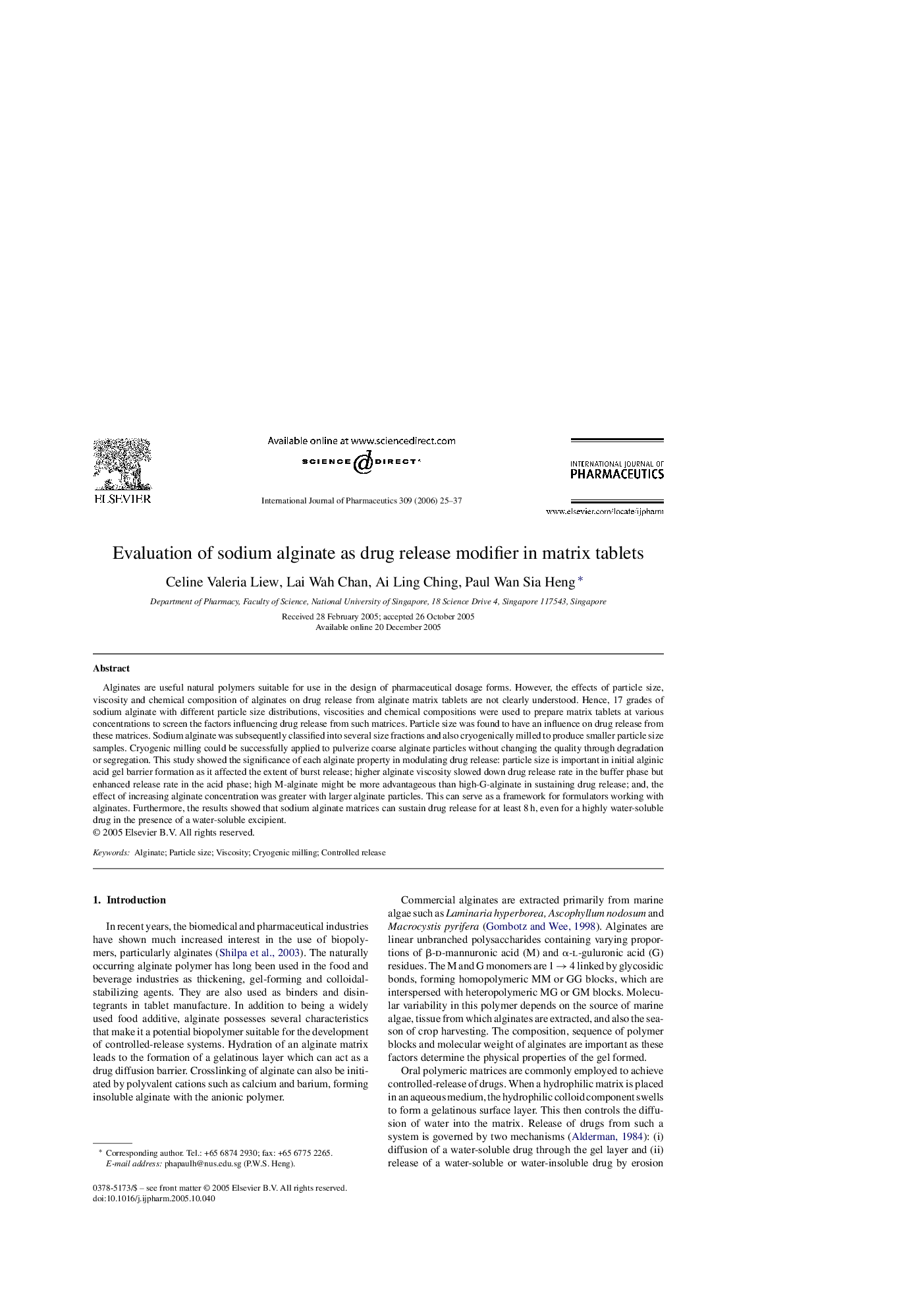| Article ID | Journal | Published Year | Pages | File Type |
|---|---|---|---|---|
| 2507120 | International Journal of Pharmaceutics | 2006 | 13 Pages |
Alginates are useful natural polymers suitable for use in the design of pharmaceutical dosage forms. However, the effects of particle size, viscosity and chemical composition of alginates on drug release from alginate matrix tablets are not clearly understood. Hence, 17 grades of sodium alginate with different particle size distributions, viscosities and chemical compositions were used to prepare matrix tablets at various concentrations to screen the factors influencing drug release from such matrices. Particle size was found to have an influence on drug release from these matrices. Sodium alginate was subsequently classified into several size fractions and also cryogenically milled to produce smaller particle size samples. Cryogenic milling could be successfully applied to pulverize coarse alginate particles without changing the quality through degradation or segregation. This study showed the significance of each alginate property in modulating drug release: particle size is important in initial alginic acid gel barrier formation as it affected the extent of burst release; higher alginate viscosity slowed down drug release rate in the buffer phase but enhanced release rate in the acid phase; high M-alginate might be more advantageous than high-G-alginate in sustaining drug release; and, the effect of increasing alginate concentration was greater with larger alginate particles. This can serve as a framework for formulators working with alginates. Furthermore, the results showed that sodium alginate matrices can sustain drug release for at least 8 h, even for a highly water-soluble drug in the presence of a water-soluble excipient.
